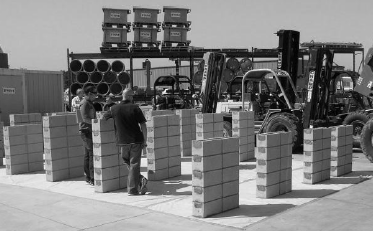1 Executive Director, Masonry Institute of America, Torrance, CA 90501, USA jc@masonry.pro
2 Executive Director, Concrete Masonry Association of California and Nevada, Citrus Heights, CA 95610, USA kurt@cmacn.org
ABSTRACT
The genesis of coring masonry walls can be traced back to California Schoolhouse Section Circular No. 10, July 1960 and codified in Article 4 of the 1963 California Administrative Code. The 1963 code required a minimum shear bond between the grout and masonry unit of 0.69 MPa (100 psi). Double-wythe reinforced grouted brick masonry was predominant in school construction and the concept of bond between the masonry unit and grout was a concern. The bond requirement of 0.69 MPa (100 psi) seems to be arbitrary. The 1988 edition of the California Building Code (CBC) modified the minimum bond interface between the grout and
masonry unit to 2.5 𝑓! , or about 0.67 MPa (97 psi) for f’m = 10.3 MPa (1,500 psi).
Currently, the coring provision still exists in the CBC; however, the type of construction has changed significantly over the past 50 years. Schools and other buildings that were constructed of double-wythe clay masonry are now built of single-wythe concrete masonry units with face shells connected by one or more cross-webs. Increased structural reinforcement in masonry has made it more difficult to avoid cutting reinforcement during the coring extraction process. Additionally, there are no published standards to follow for the core sample extraction or core shear test procedure.
In 2011, the Masonry Institute of America and Concrete Masonry Association of California and Nevada conducted a test program to evaluate the significance of the coring process and subsequent test results. This paper will elaborate on the history of the coring process, outline test procedures and results and make recommendations for coring procedures.
KEYWORDS: bond, code, core, grout, shear
163.pdf



